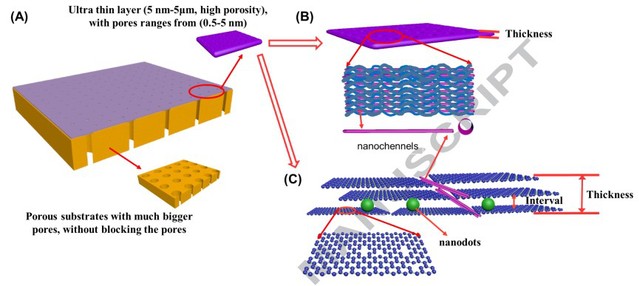The team led by Prof. Shao Lu form School of Chemistry and Chemical Engineering in HIT recently published a prospective review paper titled “Towards Sustainable Ultrafast Molecular-Separation Membranes: from Conventional Polymers to Emerging Materials” in Progress in Materials Science to report the recent progress and challenges in the development of Ultrafast Molecular-Separation (UMS) Membranes. This work is co-authored with Prof. Ma Jun from HIT, Prof. Guo Zhanhu from University of Tennessee and Dr. Cher Hon Lau form he University of Edinburgh.
Separation processes are fundamental in the biopharmaceutical, food, agricultural, chemical and petrochemical industries. Compared with traditional energy-intensive separation technologies such as distillation, pressure- and temperature-swing adsorption, membrane separation is more attractive due to its low carbon footprint, small spatial requirements and a lack of a phase transition in most cases. Ultrafast molecular separation (UMS) membranes are highly selective towards active organic molecules such as antibiotics, amino acids and proteins that are 0.5-5 nm wide while requiring a low energy input to achieve high speed separation. These advantages are the keys for deploying UMS membranes in a plethora of industries, including petrochemical, food, pharmaceutical, and water treatment industries, especially for dilute system separations. Most recently, advanced nanotechnology and cutting-edge nanomaterials have been combined with membrane separation technologies to generate tremendous potential for accelerating the development of UMS membranes. It is therefore critical to update the broader scientific community on the important advances in this exciting, interdisciplinary field.
This review emphasizes the unique separation capabilities of UMS membranes, theories underpinning UMS membranes, traditional polymeric materials and nanomaterials emerging on the horizon for advanced UMS membrane fabrication and technical applications to address the existing knowledge gap. This work includes detailed discussions regarding existing challenges, as well as perspectives on this promising field.
This work was financially supported by National Natural Science Foundation of China, State Key Laboratory of Urban Water Resource and Environment (Harbin Institute Technology), and HIT Environment and Ecology Innovation Special Funds.

Original paper at http://www.sciencedirect.com/science/article/pii/S0079642517301305
Homepage of Prof. Shao:http://homepage.hit.edu.cn/shaolu